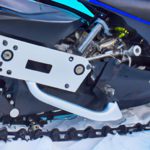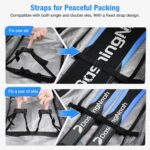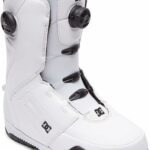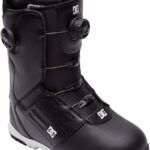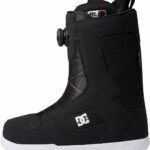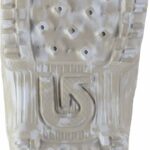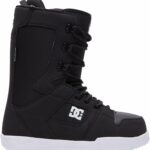Imagine standing at the top of a snow-covered mountain, crisp winter air filling your lungs, and a vast expanse of white stretched out before you. The only thing between you and a perfect winter adventure is the quality of your snowshoes. This article is designed just for you. Here, we’ll be guiding you through the process of picking the best snowshoes, imparting all the knowledge and expertise you’ll need to make an informed decision the next time you’re gearing up for a snowy escapade.
Understanding Snowshoes Basics
Snowshoes are as much a part of a winter adventure, as skis or snowboards. If you’re here, you’re probably mulling over the idea of embarking on a snowshoeing escapade. So, strap on and let’s embark on this journey to dive into the world of snowshoes.
What are Snowshoes
Think of snowshoes as your winter footwear’s best friend. These are specialized shoes worn over your regular footwear, designed to help you walk or run on snow-covered surfaces without sinking into it. Snowshoes evenly spread your weight over a larger area so that your footprint doesn’t dig deep into the snow.
Importance of Snowshoes
As you trudge through the snow, you’ll quickly realize the difference a pair of snowshoes can make. They prevent post-holing – that’s sinking into the snow up to your waist! Say goodbye to energy consuming, frustrating, and sometimes even dangerous slips or falls. Snowshoes give you the freedom to explore the snow-covered wilderness safely and efficiently.
How Snowshoes Work
The magic of snowshoes lies in their ability to provide what’s known as “flotation”. Flotation is all about distributing your weight over a broader surface area to prevent sinking. The wider (and sometimes longer) frames accomplish this. They also give you much-required traction with crampons and ridges underfoot, preventing undesired slips on icy or steep surfaces.
Know Your Needs
One size does not fit all when it comes to snowshoes. Needless to say, identifying your needs is the first step in choosing the right pair.
Identifying Your Snowshoeing Goals
Are you contemplating snowshoeing to enjoy the serenity of a winter afternoon or to test your fitness levels on a backcountry trek? Identifying your goal helps narrow down the type of snowshoe you need.
Different Types of Snowshoeing Activities
Snowshoeing activities range from leisurely walks on groomed trails to challenging backcountry expeditions. You also have snowshoe runs and races for the fitness enthusiasts.
Expected Terrain and Snow Conditions
The terrain—the flat, rolling, or mountainous type— and snow conditions—wet, powder, packed or icy—would also dictate the kind of snowshoe you should get.
Types of Snowshoes
Snowshoes come in various types. By assessing your purpose and conditions, you can pick the perfect pair.
Recreational Snowshoes
These are perfect for first timers or those who just want to have fun on well-trodden paths or flat terrain. They come with modest crampons and provide ample flotation for light to medium snow conditions.
Backcountry Snowshoes
Take on the steep, icy, or ungroomed terrains head-on with backcountry snowshoes. They offer superior flotation, aggressive traction, and are built to withstand harsh conditions.
Running Snowshoes
Interested in ramping up your fitness regime? Running snowshoes are lightweight, with smaller dimensions and less aggressive traction systems for easy movement.
Size and Weight Considerations
Much like regular shoes, the right size is integral when choosing snowshoes.
Snowshoe Sizing Guide
The rule of thumb here is the heavier the person or the lighter the snow, the larger the snowshoe needed. Your gender and the type of activity also play a role in determining the size.
Impact of User Weight
Remember, it’s not just your weight but also the weight of your gear that has to be considered when choosing snowshoes. Choosing a size to support the combined weight will provide much-needed comfort and ease of use.
Importance of Gear Weight in Selection
Gear weight can adversely impact flotation. Your snowshoes need to maintain you afloat even when you’re carrying a considerable amount of equipment, especially in backcountry trekking.
Material and Construction
The construction of snowshoes talks a lot about its durability and functionality. The frame and decking are usually where the difference lies.
Snowshoe Frame Materials
Snowshoe frames are made from either plastic, aluminum, or composite materials. Where aluminum frames provide durability and lightness, plastic ones are less expensive and promote easy maneuverability.
Decking Material Options
Decking material is predominantly synthetic or neoprene-coated nylon, or Hypalon rubber, known for their durability, lightness, and resistance to cold temperatures.
Quality and Durability
Quality and durability go hand-in-hand with materials used. Top-quality materials promise longevity and reliability, making you ready for the harshest winters.
Consideration of Shoe Bindings
Bindings are what keep your shoes attached to the snowshoes. Let’s understand their role in your comfort and safety during snowshoeing.
Binding Types
Bindings can have a rigid or rotating attachment. Rigid bindings provide better stability on groomed or flat terrain, while rotating bindings are for steep or deep snow terrains as they shed off snow more efficiently.
Ease of Adjustment
The adjustability of bindings like the toe straps, heel straps, and instep straps accounts for a comfortable and secure fit. Some come with quick-release buckles or ratchet systems for easy adjustments.
Binding Durability
After all, your bindings take on the majority of stress during snowshoeing. High-quality, sturdy bindings ensure the security of your foot and the longevity of your snowshoe.
Crampons and Traction
Traction is essential to keep you moving forward without slips. Crampons are the key here.
Importance of Traction in Snowshoes
Traction helps you have a secure footing on snowy or icy terrains so you can enjoy your adventure without worrying about falls or slides.
Types of Crampons
Crampons are usually under the balls of the feet and sometimes at the heel. The type of activity dictates their aggression, from smaller, less protrusive ones for easy trails to larger, heavily toothed ones for icy terrains.
Understanding Climbing Bars
Climbing bars under the heel are a boon during steep ascents as they help reduce calf fatigue. They can be easily flipped up and down as required.
Snowshoe Features and Accessories
Choosing the right additional features and accessories can enhance your snowshoeing experience.
Additional Snowshoe Features
Features like telescopic poles for balance, heel lifts for steep climbs, or side rails for stability are worth considering to get a tailor-made snowshoeing experience.
Useful Snowshoeing Accessories
Consider accessories like gaiters to keep your lower legs dry, special snowshoeing boots for comfort, easy-to-carry bags for storage, and maintenance and repair kits for long-lasting snowshoes.
Choosing Snowshoe Poles
Snowshoe poles provide extra balance and support. Adjustable, lightweight, and fitted with snow baskets, these poles are handy accessories for any snowshoer.
Price and Brand Consideration
Finding the right balance between price and quality needs careful deliberation.
Establishing Your Budget
Ask yourself how much you’re willing to invest. Snowshoes are typically a one-time investment, so think long-term.
Identifying Reliable Snowshoe Brands
There are several snowshoe brands. Researching reviews and ratings can lead you to reliable ones known for quality and durability.
Price vs. Quality in Snowshoes
Investing in a good-quality pair of snowshoes can actually save you money in the long run. They’ll be more durable and offer better performance compared to cheaper, lower-quality versions.
Trying and Testing Snowshoes
Whenever possible, try snowshoes before buying. It’s the best way to ensure you’re making a worthwhile investment.
Where to Try Out Snowshoes Before Buying
Outdoor stores often offer rental services. Rent a pair, try it out on your preferred terrains before deciding.
Key Elements to Check When Testing
Check for the fit, comfort, ease of use, and suitability for your chosen terrain and activity.
Making a Final Decision
Once you’ve gone through the steps—from understanding basics, identifying your needs, studying types and materials, checking out additional features, and testing them out—you can be confident in making your final purchase. And with that, you’ll be all set to start your snowshoeing adventure.
- What Snowboard Bindings Should I Get? - January 23, 2024
- What Size Screws For Snowboard Bindings? - January 23, 2024
- How To Snowmobile On Water? - January 23, 2024

